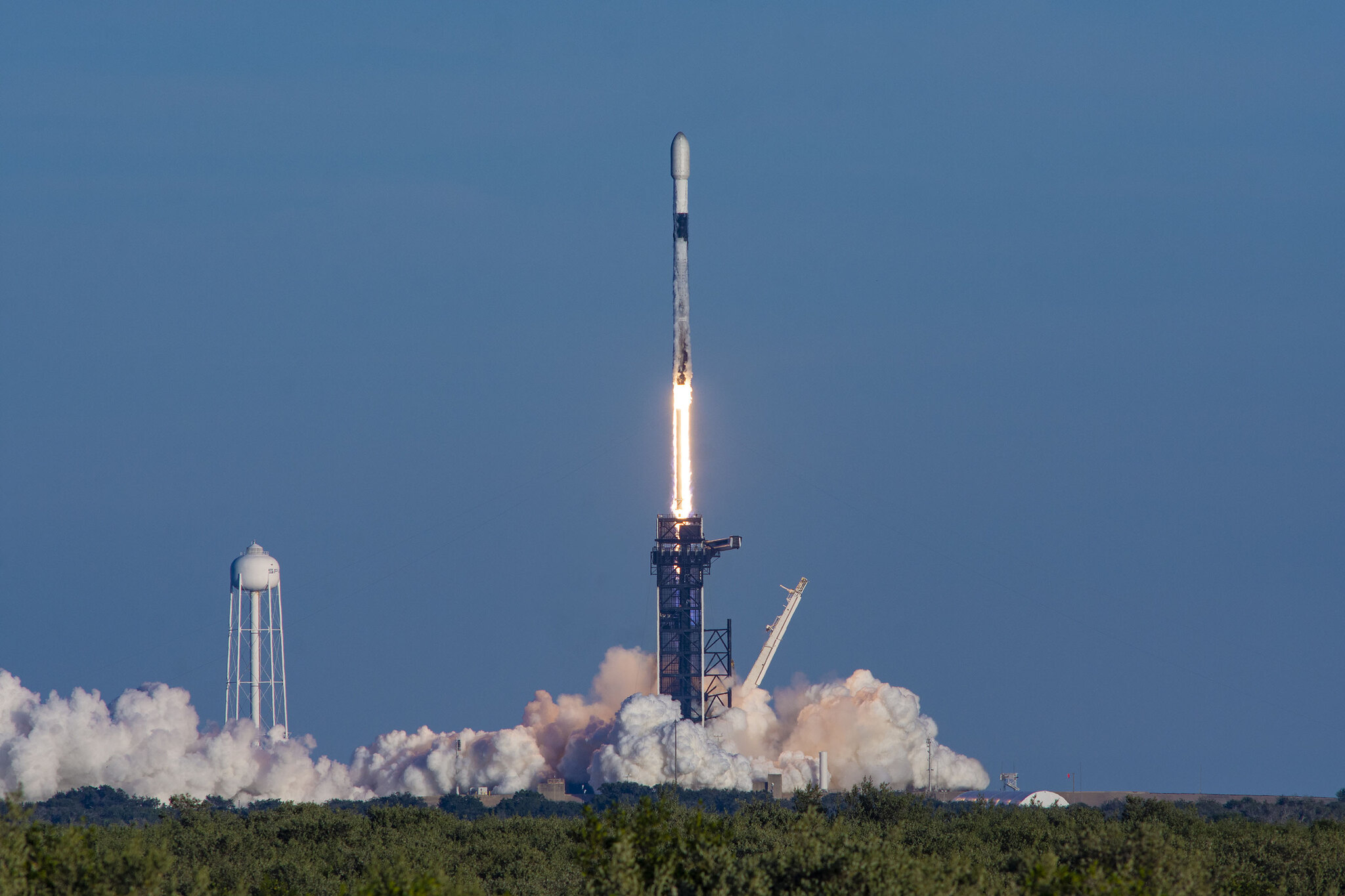You can watch SpaceX launch more than four dozen Starlink internet satellites tonight. Here's how.
Liftoff is scheduled for 9:02 p.m. EST (0202 Jan. 19 GMT).
Update for 6:54 pm ET on Jan. 18: SpaceX has delayed the launch of its next Starlink mission to 9:02 p.m. EST (0202 GMT) on Jan. 18. See our updated story below.
A SpaceX rocket will launch a new fleet of the company's Starlink internet satellites into orbit Tuesday night (Jan. 18) and you can watch it live online.
In what will be SpaceX's third flight of 2022, the company is set to loft 49 Starlink satellites into space on a Falcon 9 rocket from NASA's Launch Complex 39A at the Kennedy Space Center in Florida. Liftoff is scheduled for 9:02 p.m. EST (0202 Jan. 19 GMT).
The launch was originally scheduled for Monday night, but SpaceX postponed it by 24 hours due to weather conditions at the launch site and the Falcon 9 booster's drone ship landing site in the Atlantic Ocean.
"With more favorable weather conditions for liftoff and booster recovery, now targeting Tuesday, January 18 at 7:04 p.m. ET for Falcon 9’s launch of Starlink satellites," SpaceX wrote in a Twitter update Monday afternoon. Current weather forecasts from the U.S. Space Force predict a 95% chance of good weather at launch time for SpaceX's Starlink flight Tuesday, with high winds at liftoff the only concern.
On Tuesday evening, SpaceX pushed the target date back by two hours, to 9:02 p.m. EST.
You'll be able to watch the launch here and on the Space.com homepage, courtesy of SpaceX, beginning about 15 minutes before launch. You can also watch it directly from SpaceX's website and on YouTube.
Get the Space.com Newsletter
Breaking space news, the latest updates on rocket launches, skywatching events and more!
Related: SpaceX's Starlink satellite megaconstellation launches in photos

Tuesday's launch will mark SpaceX's second Starlink mission of 2022 following the Jan. 6 launch of 49 other satellites from Pad 39A at the Kennedy Space Center. A second SpaceX mission, called Transporter-3, launched 105 small satellites into orbit on Jan. 13 from a nearby pad at the Cape Canaveral Space Force Station, but did not carry any Starlink satellites.
The upcoming launch will be the 36th dedicated Starlink mission for SpaceX, which has launched nearly 2,000 of the broadband internet satellites since 2019. Since that first flight, SpaceX has been steadily growing its Starlink megaconstellation to provide fast, reliable internet service anywhere on Earth, especially in remote and underserved regions. The initial constellation is expected to number about 4,400 satellites.
In 2021, SpaceX redesigned its Starlink satellites to include laser communications so they could better communicate with each other without using ground relays. The Starlink satellites equipped with those laser systems will soon activate them, SpaceX CEO Elon Musk wrote in a Twitter update Saturday (Jan. 15).
Musk also added that 1,469 of SpaceX's Starlink satellites are currently active, with 272 of them moving into operational orbits between 335 and 348 miles (540 and 560 kilometers) above Earth.
The Falcon 9 rocket launching Tuesday's Starlink mission has flown nine times before. It has launched six different Starlink missions, as well as the GPS III-3 satellite for the U.S. military, the Turksat 5A satellite for Turkey and the Transporter 2 rideshare mission, which launched 85 small satellites and three Starlink satellites.
The two payload fairings that make up the Falcon 9's nosecone have also flown before on Starlink missions. After launch, the Falcon 9's first stage will return to Earth to land on SpaceX's drone ship A Shortfall of Gravitas in the Atlantic Ocean so that it can be refurbished for a future flight. SpaceX regularly reuses Falcon 9 boosters and fairings as part of its reusability program to reduce the cost of its missions.
Editor's note: This story was update at 2:50 p.m. EST to include the new Tuesday, Jan. 18, launch date and time for SpaceX's next Starlink mission.
Email Tariq Malik at tmalik@space.com or follow him @tariqjmalik. Follow us @Spacedotcom, Facebook and Instagram.
Join our Space Forums to keep talking space on the latest missions, night sky and more! And if you have a news tip, correction or comment, let us know at: community@space.com.

Tariq is the Editor-in-Chief of Space.com and joined the team in 2001, first as an intern and staff writer, and later as an editor. He covers human spaceflight, exploration and space science, as well as skywatching and entertainment. He became Space.com's Managing Editor in 2009 and Editor-in-Chief in 2019. Before joining Space.com, Tariq was a staff reporter for The Los Angeles Times covering education and city beats in La Habra, Fullerton and Huntington Beach. In October 2022, Tariq received the Harry Kolcum Award for excellence in space reporting from the National Space Club Florida Committee. He is also an Eagle Scout (yes, he has the Space Exploration merit badge) and went to Space Camp four times as a kid and a fifth time as an adult. He has journalism degrees from the University of Southern California and New York University. You can find Tariq at Space.com and as the co-host to the This Week In Space podcast with space historian Rod Pyle on the TWiT network. To see his latest project, you can follow Tariq on Twitter @tariqjmalik.









